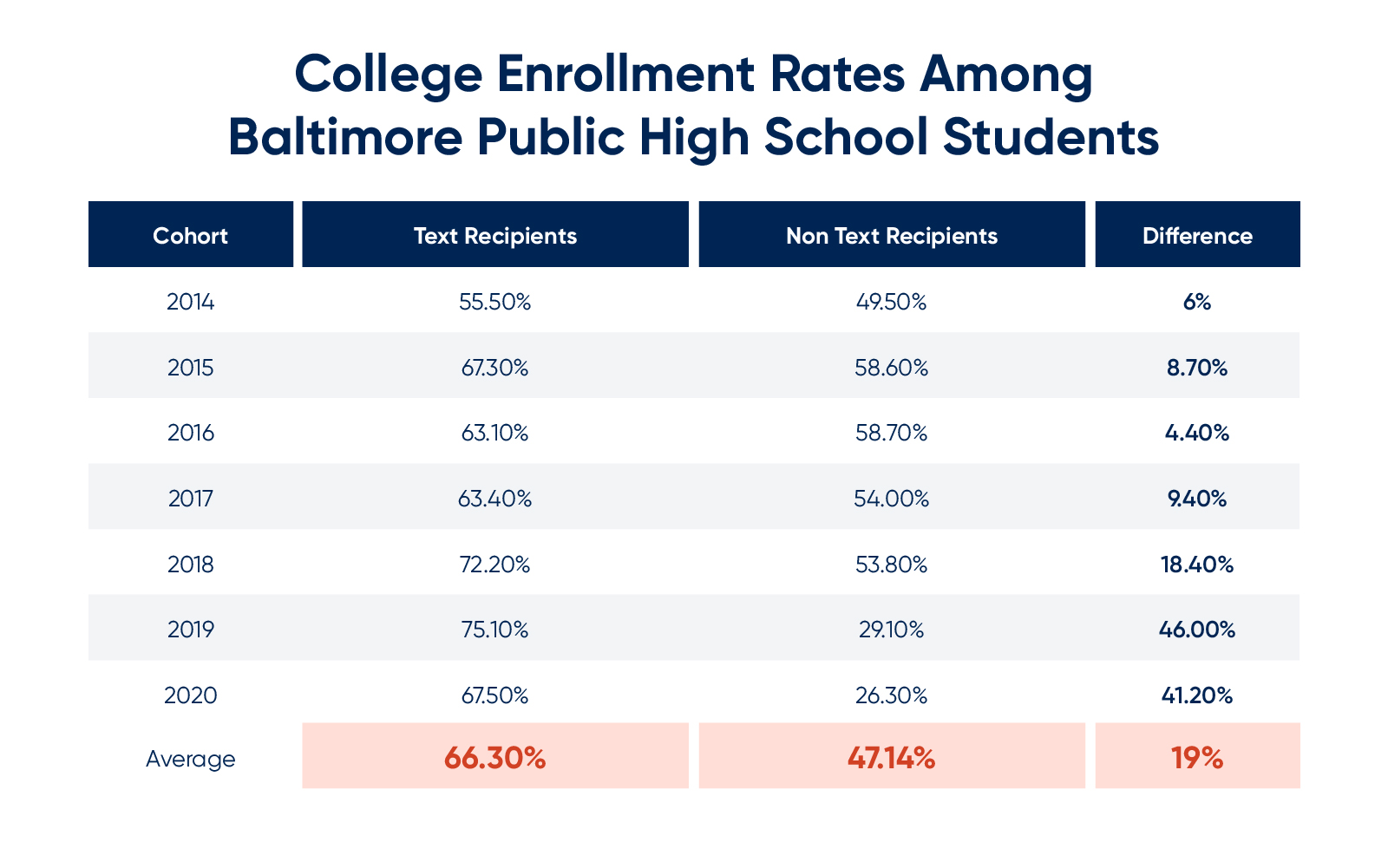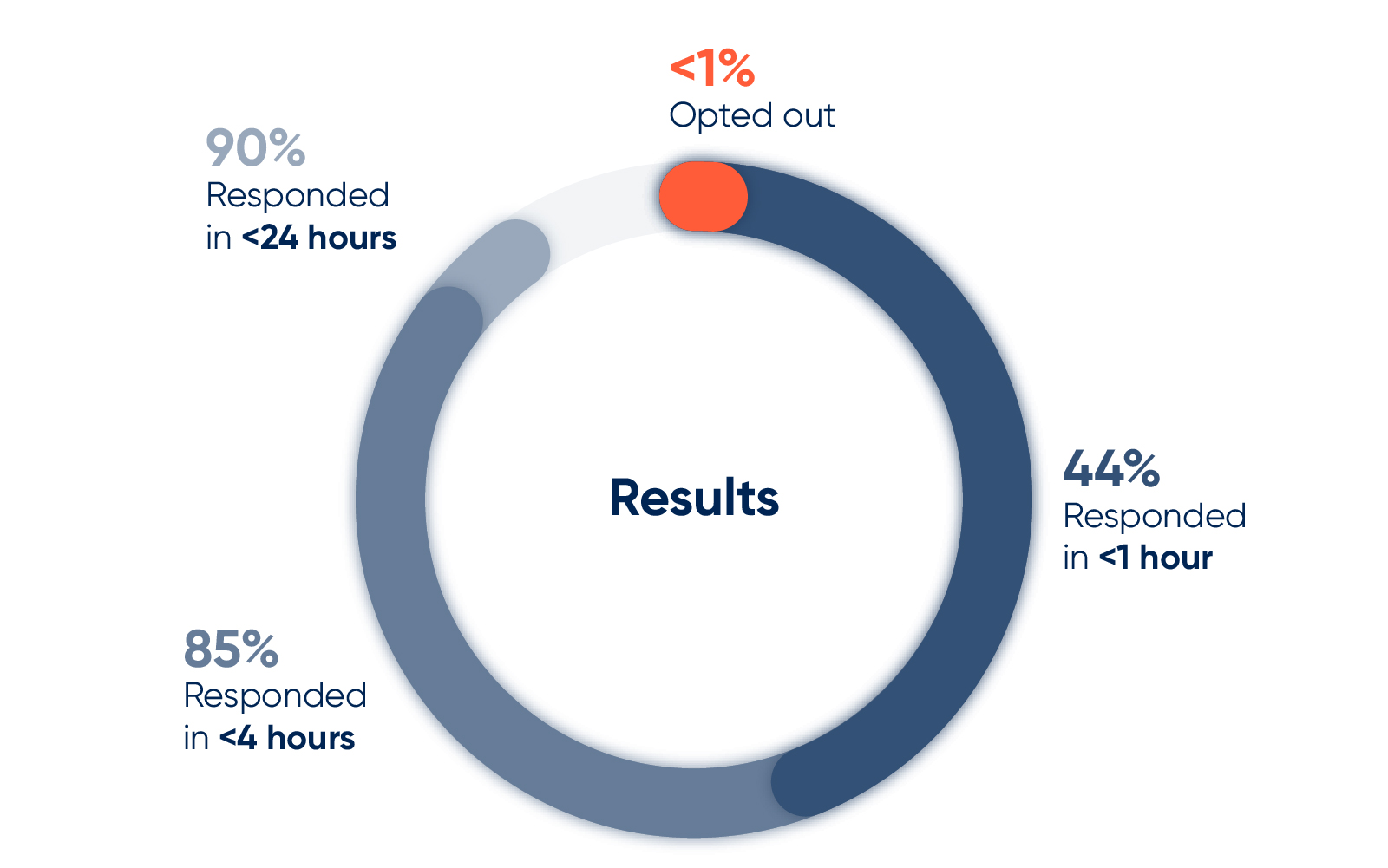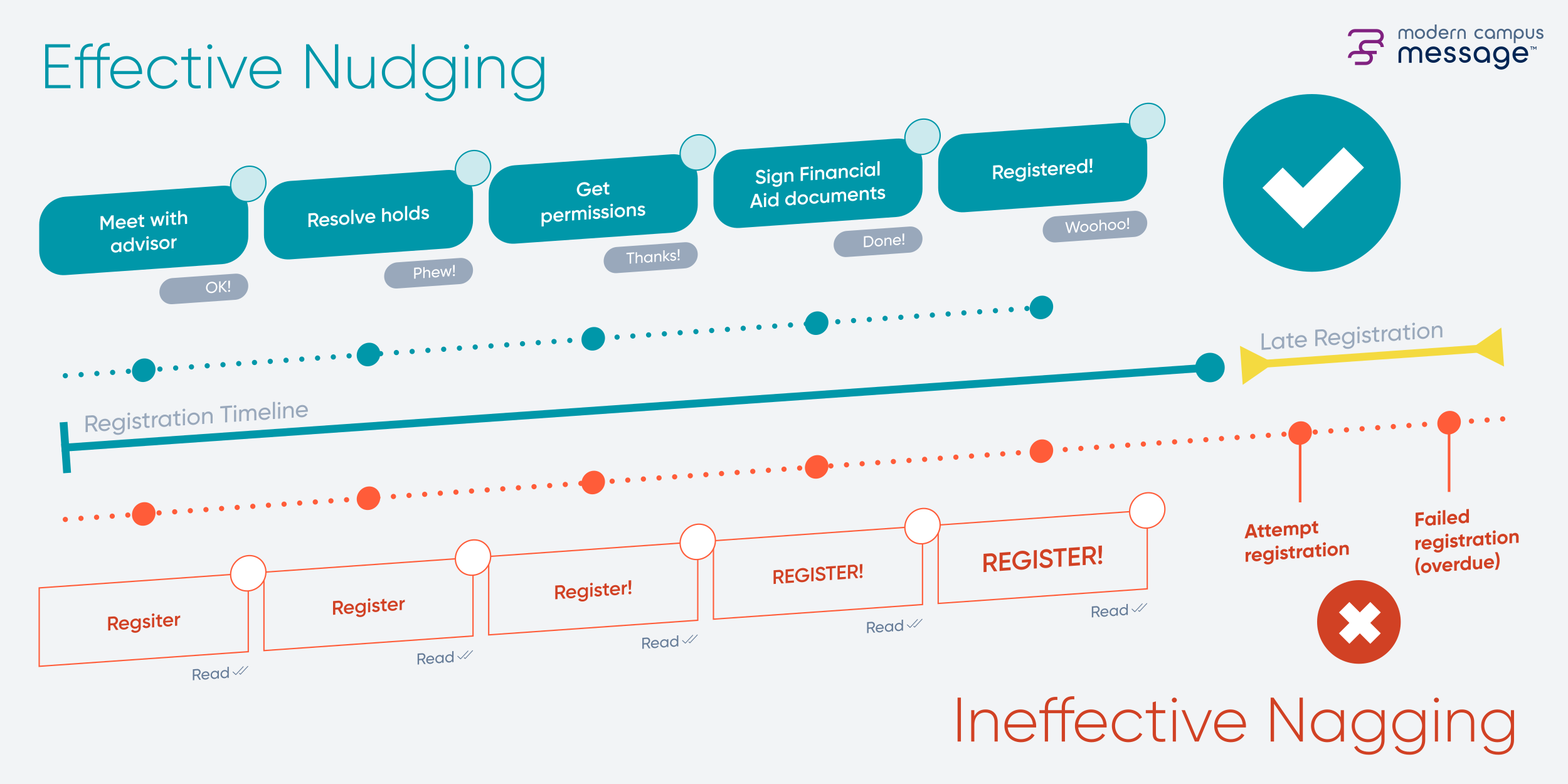The phrase Summer Melt may evoke ice cream melting away in the heat, but in the context of higher education, it refers to something even sadder and costlier for colleges and universities worldwide.
The National College Attainment Network defines Summer Melt as:
“the phenomenon of college-intending students who have applied to, been accepted by, and made a deposit to a college or university, but fail to matriculate to that college (or any other) in the fall following their high school graduation”
In other words, Summer Melt is the higher ed version of ghosting.
Summer Melt cuts across all institution types and student demographics; each year, 10 to 20 percent of would-be-students succumb to it. However, these rates are even higher—up to 40 percent—among low-income students, students in large urban districts and students who are bound for community colleges.
It may sound disheartening, but with the right approach and effort across the institution, it’s possible to chip away at Summer Melt, increase enrollment and set students on the right paths toward degree attainment.
It starts with understanding why students who are seemingly committed to your institutions melt away.
10 Reasons Why Students Succumb to Summer Melt & What You Can Do About It
The majority of students who fail to matriculate do so not because they had a change of heart but because they encounter logistical or emotional barriers and lack the knowledge or support systems needed to overcome them.
To ward off Summer Melt, your institution needs to fill these knowledge and support gaps. One simple but effective way to do so is through conversational text messaging. By reaching students through their favorite mode of communication—their phones—you can direct thousands of incoming students to the right support services. And just as importantly, you can show that your institution cares about their wellbeing and success.
To craft the right message, you first need to understand the barriers that cause Summer Melt. Here are ten of the most common challenges today’s learners face, along with how you can address each concern head-on via higher ed texting software.
1. Lose of access to school counselors
Many students relied on high school counselors to guide them through the college research and application process. Without these counselors, who are typically unavailable in the summer, students may not have any mentors to turn to for general advice, emotional support and logistical guidance.
How your texts can help: Automated texts, supplemented with hyper-personalized messaging, can show students that they do indeed have a guide: You. Texts can help students solve immediate challenges and, perhaps even more importantly, reassure students that they’ll have accessible support in the future—right from their phones.
2. Lack of social capital
Social capital involves intangible resources that come embedded within interpersonal relationships or social institutions. Many students—such as those whose parents and older siblings went to college, attend wealthy high schools wherein college attendance is the norm, and have many social media connections with higher ed—are rich in social capital.
But many other learners lack social capital, which may inhibit their enrollment. As explained in a blog for College Now, a college access organization based in Cleveland, Ohio:
"First-generation and low-income students often do not have that social capital or support system when they embark on the college-going process. Despite good intentions among friends and family members, the system is set up to support those who already know how to navigate it. College visits, completing admissions applications, applying for financial aid, etc. are things that it is assumed everyone does or knows to do as they prepare for life after high school."
How your texts can help: By texting a student, you’ll instantly increase their social capital. What’s more, you can connect learners to additional resources, experts and communities to expand that capital further. Be sure not to assume; ere on the side of over-explaining processes, procedures and expectations that will be new to many of the young adult you’re texting.
3. Complex financial aid forms
Financial aid forms like FAFSA are challenging for even the most well-informed students to complete. And for students without social capital or knowledgeable advisors to guide them, FAFSA can seem like a cruel, impossible test—one that they’re being set up to fail.
Students may melt away because they are unable or too intimidated to complete FAFSA in the first place or because they fill it out incorrectly, leading to a less-than-desirable financial aid offer.
In responding to a 2021 survey, 30% of both first-generation and low-income students said completing FASFA was difficult. They cited lack of parental support, difficulty acquiring tax information, confusing questions, income changes and citizenship status as barriers. What’s more, lmost 40% of first-generation students and 37% of low-income students said they completed the FAFSA themselves, compared to just 11% of higher-income students.
How your texts can help: Encouraging students to ask your questions about FAFSA and reveal what’s tripping them up can help them complete the form and feel confident about the accuracy of their answers.
4. Other form complications
If only matriculating meant pressing a single “start college” button.
Forms related to a student’s medical and vaccine history, housing preferences, state residency, high school test scores and more may also inhibit enrollment. To complete these forms, students will have to contact their doctor, research housing costs, secure proof of residency, hunt down their testing scores and deal with other logistics that may understandably confuse or intimate them.
How your texts can help: Provide advice on how to complete these forms and secure requested documents. Taking some of that weight off a student’s shoulders may be all they need to complete a form that finalizes their enrollment.
5. Financial concerns
Even if a student understands the costs of tuition prior to applying to your institution, they may feel blindsided by additional expenses like housing, books and student activity fees.
Additionally, their plans to pay may fall through during the summer; perhaps they struggle to find a part-time job, acquire unexpected medical expenses or don’t receive as generous a financial aid package as they had expected.
How your texts can help: Connect students with additional aid opportunities, advise them on personal financial strategies and suggest cheaper alternatives, such as used books or library loan options.
6. Logistical challenges
Barriers in a student’s personal life may arise over the summer that lead a student to worry about their ability to succeed at your institution. They may lose access to reliable transportation, acquire a part-time job with hours that seemingly conflict with class, be expected to care for an elderly family member or struggle with their mental health.
How your texts can help: Talk students through their options, such as public transport, night classes and mental health services. Assure learners that these common challenges do not have to block the road toward their degree attainment.
7. Missing email and snail mail
If your institution relies on email and/or ye olde postage mail to communicate, then some students may miss vital messages. Perhaps they’ve moved and forgot to inform the institution of their new address, lost access to email or simply confused your messages with spam. All of these occurrences can lead a student to miss crucial steps toward marticulation.
How you can help via text: Your texts are likely to reach and engage way more students than email or physical mail. Today, more than 96% of adults in the US own a smartphone and the open rate for texting is an incredible 98%, versus email’s measly 20%.
8. Worries about social fit
With their high school friends off to other institutions, incoming students may question their ability to form new social networks on your campus. They may worry about how they'll have fun, get along with their roomate(s), find likeminded peers or engage in co-curricular programming.
How you can help via text: Inform students of social opportunities, such as student clubs and orgs, campus events, and networks of students on social media. Considering collaborating with Student Affairs to get the right messages out. Residence Life and Housing can also help answer students' concerns about roomates and social opportunities within the residence halls.
9. Missing orientation
Students may not know that they have to sign up for orientation, they may struggle to find transportation to campus or they may simply forget to show up—all of which can mean they'll fail to register for classes and gain critical social capital for success.
How you can help via text: Remind students to register, answer their questions about orientation’s importance, provide links to public transport options and send timely reminders just before the big event.
10. Concerns about academics
Students may begin to worry about their academic fit over the summer. They may become intimidated by course descriptions and syllabi, be disheartened to discover that they need to take remedial courses or struggle to get through pre-assigned reading.
How you can help via text: Inform students of academic and co-curricular support services and how they’ll be able to access them, on campus and digitally. These can include the writing center, tutoring and even student organizations focused on particular academic fields and professions.
Nudge, Don’t Nag
The great majority of students find messaging from their colleges or universities helpful; 86% of students say that texts have prompted them to successfully complete a task.
These tasks can be steps toward matriculation. From 2014 to 2020, the CollegeBound Foundation found that students who received texts were 19% more likely to enroll in college than those who did not engage with texting. In 2019, that number was even higher: 46%!

What’s more, 90% of students responded to CollegeBound’s texts within 24 hours, and
only 1% opted out.

Key to this success was CollegeBound’s focus on relationship-building and support. Texts conveyed a genuine concern for each recipient, with staff expressing curiosity about the challenges students were facing rather than impersonal reminders. In other words, students were nudged not nagged.
As explained in Nudging by Text Best Practices:
Nudging is broadly defined as “coaxing or gently encouraging someone to do something.” In the context of education, nudging is specific communication that helps move a student through their educational journey.

In their 2014 paper Summer Nudging: Can Personalized Text Messages and Peer Mentor Outreach Increase College Going Among Low-Income High School Graduates?, researchers Benjamin L. Castleman and Lindsay C. Page found that the answer to the titular question is a resounding yes.
They theorized that:
“The text messages may impact students’ college outcomes simply by nudging them to complete required tasks at the appropriate time during the summer. Personalized messaging effectively may turn adolescents’ greatest liability during the college choice process—their impulsiveness—into an asset. By providing simplified information and task-specific links, each message potentially allows completion of required steps in the moment, before students’ attention is otherwise diverted.”
Ready to explore how you can harness the power of the leading mass text messaging platform for higher ed? With Modern Campus Message, you can automate text messages and tailor responses to segmented audiences—personalizing your communication at scale, efficiently and effectively.
Texting the Summer Melt Away
How Text Messaging Can Increase Marticulation at Your College or University
